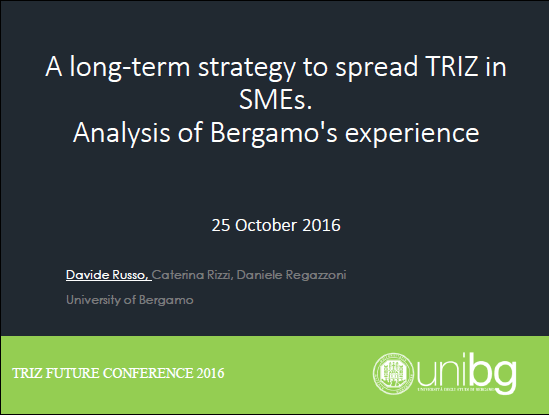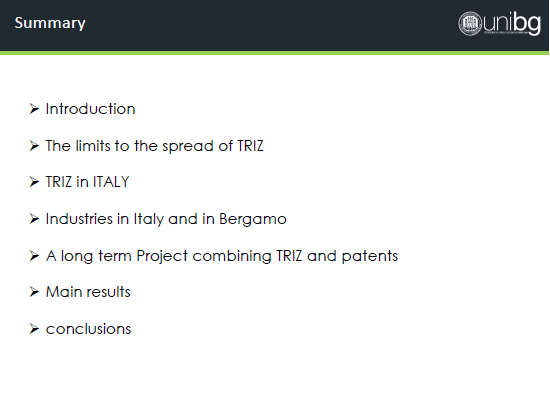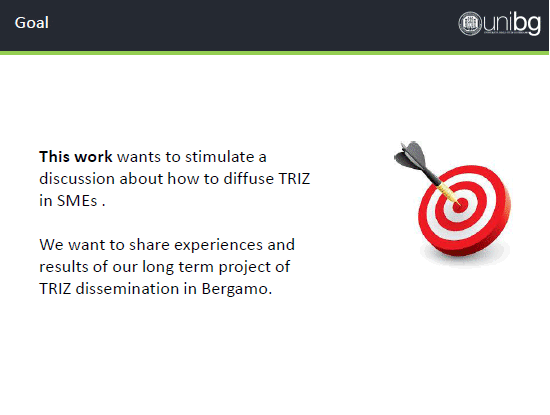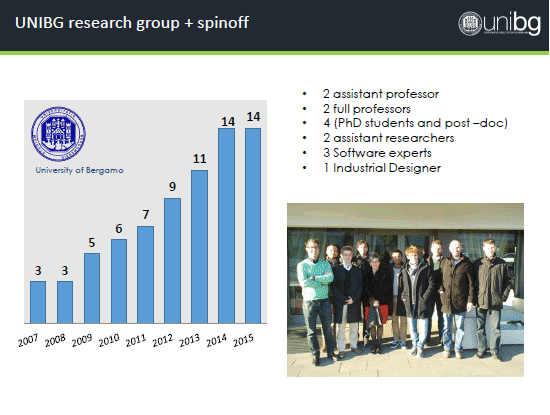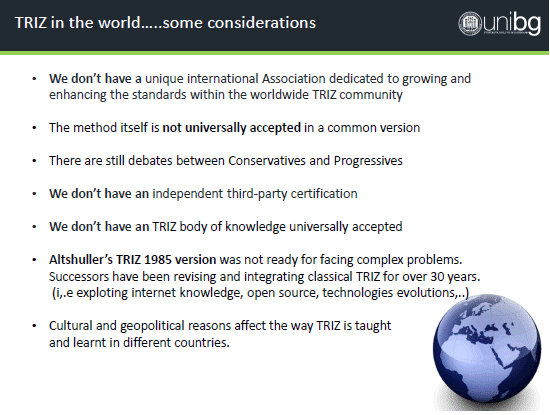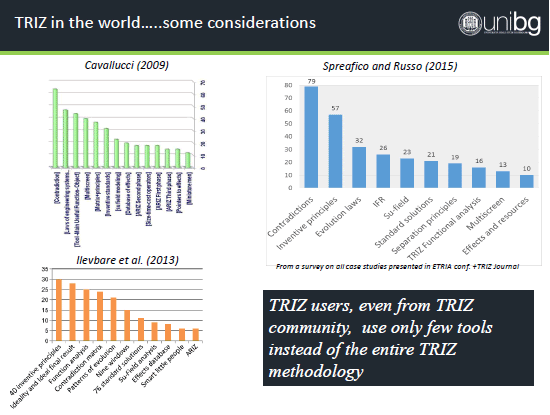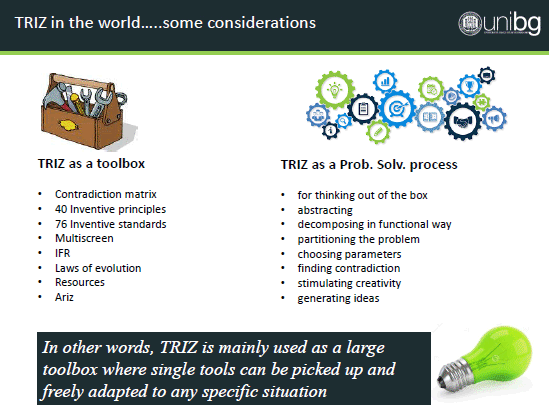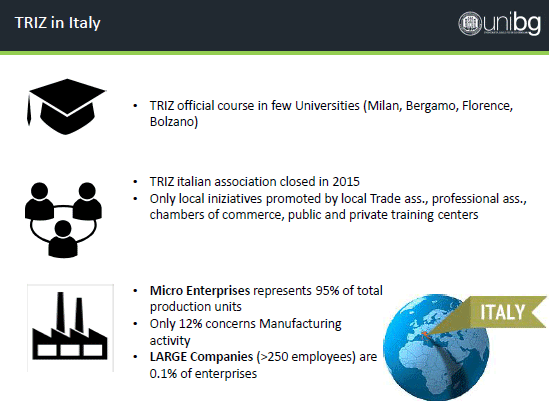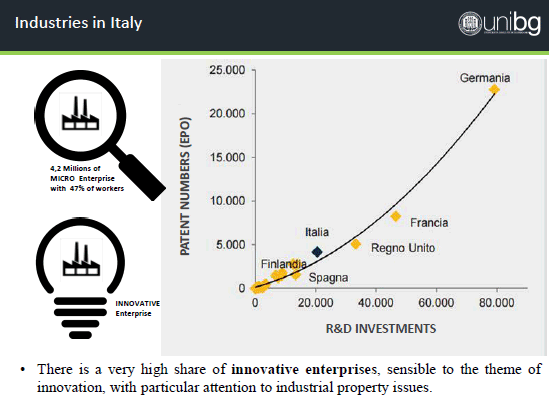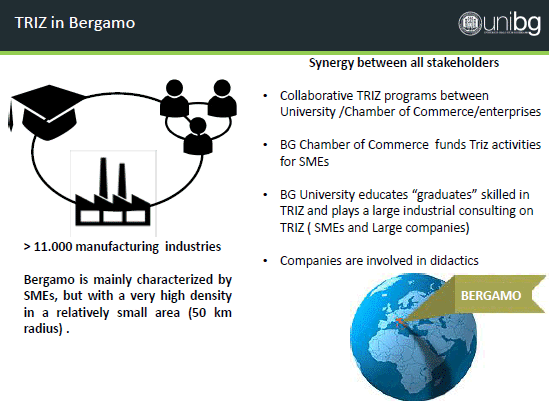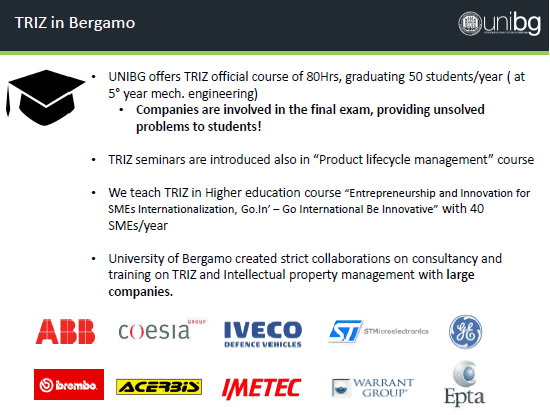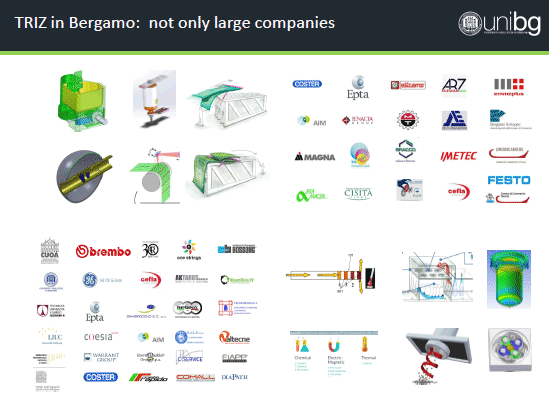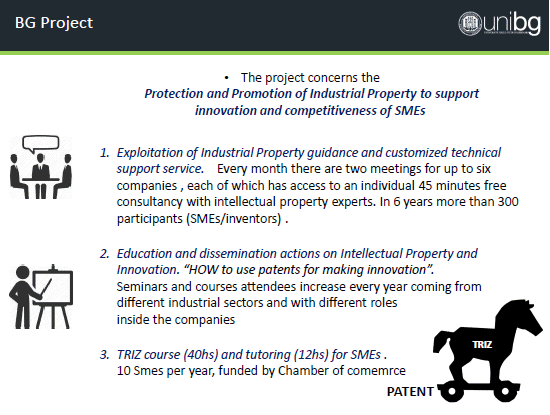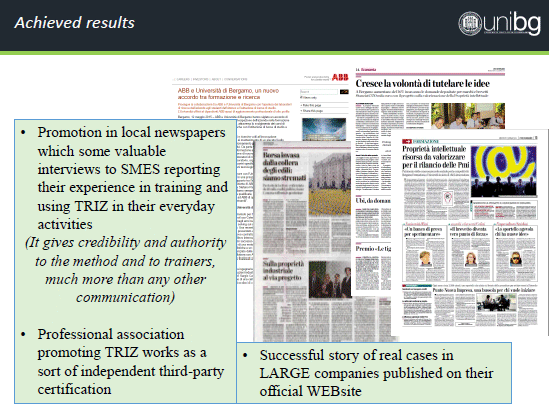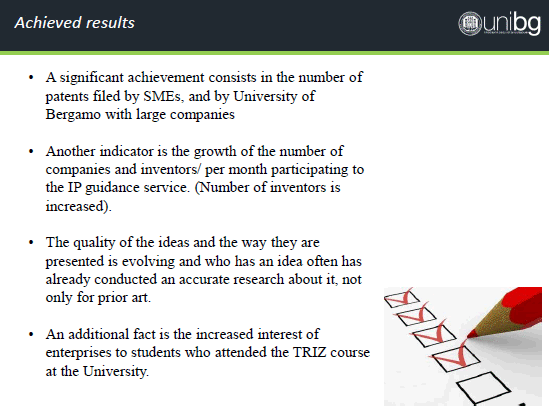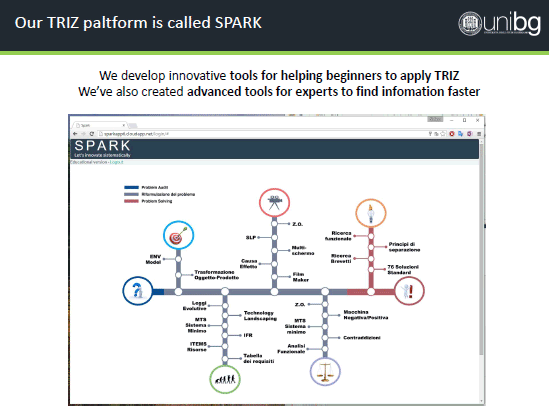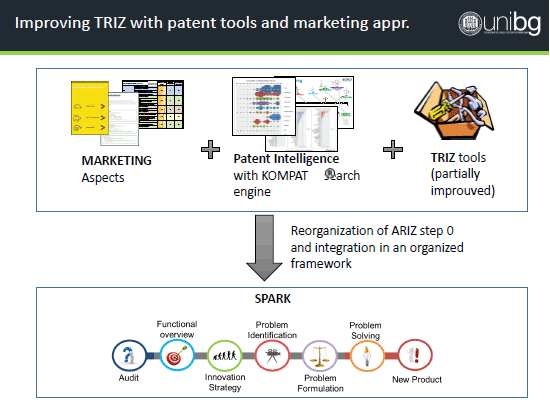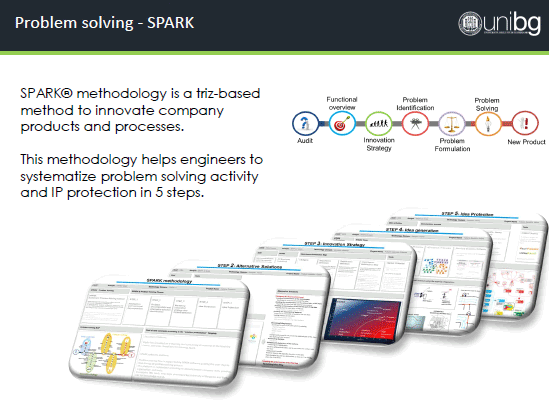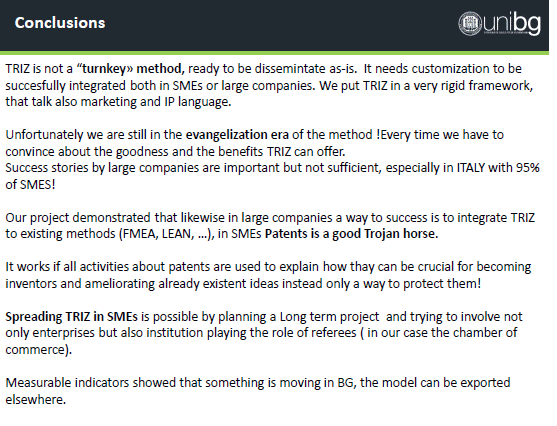This work presents an analysis of a TRIZ dissemination program, still in progress, for the development of TRIZ in Bergamo area. The project, entitled "Development of methods and tools for the management and exploitation of intellectual property for the competitive growth of the Bergamo SMEs", has been carried out by the University of Bergamo and funded by the Chamber of Commerce of Bergamo and Lombardy Region since 2009.
Although the main objective has been to spread TRIZ methodology in SMEs, it was decided not to focus on the direct teaching of TRIZ but to provide a first support to SME owners or aspiring entrepreneurs. The easiest way to involve them was to use patents as first tool to provide technical and scientific advice on the subject of industrial property management (e.g., Protection tools, patentability opinions, trademark registration, modes and costs of filing/recording, realization of prior art searches, insights on counterfeiting, etc.) and then introducing systematic innovation tools. Patent issues were used as a “Trojan horse” to overcome the mistrust towards the structured methods and to stimulate the entrepreneurs to manage innovation in a more open way.
In the basis of this approach to innovation services, we have organized a series of awareness workshops and 5 days TRIZ courses with tutoring case study analyses and industrial follow-up. This allowed us to arrange, within the project, specialized consulting services with experienced professionals in the field of consultancy in technical-legal, contractual, economic, fiscal, marketing, or even of searches.
In the last eight years, we have been collecting data that are analyzed and discussed in this paper. Pros and cons and some considerations on reproducibility and scalability of this model in other geographical contexts will be presented and discussed.
1. Introduction
2. TRIZ in Italy
2.1. Industry in Italy
2.2. TRIZ in Bergamo
3. Bergamo model: University activities
3.1. University – Courses, seminars and masters
3.2 University consultancy and professional associations
4. The BERGAMO model: Chamber of commerce
activities
4.1. Exploitation of Industrial Property guidance and
customized technical support service
4.2 Education and dissemination actions on Intellectual
Property and Innovation
4.3 TRIZ course and tutoring
4.4 Achieved results
5. Conclusions
6. References
Case Study of TRIZ Promotion:
